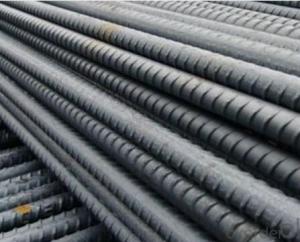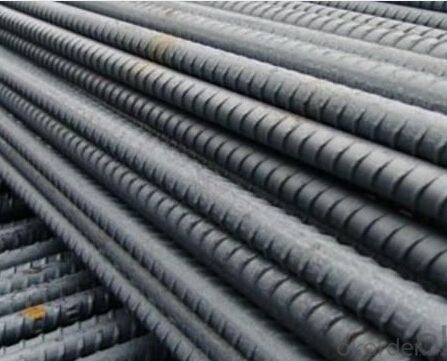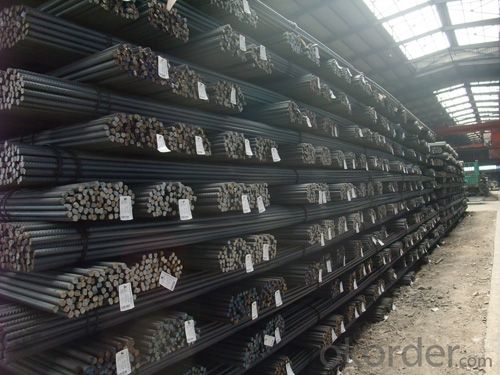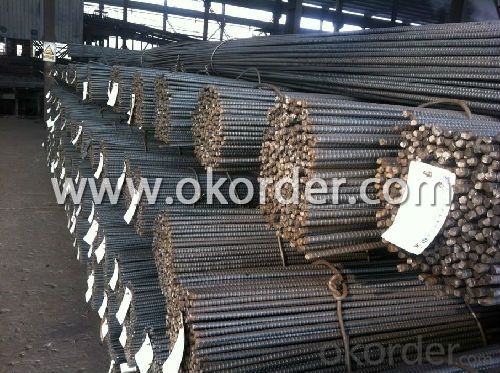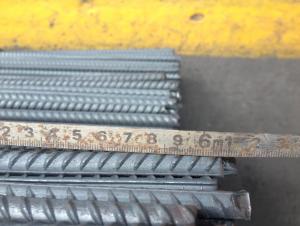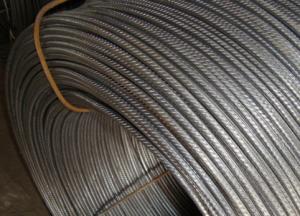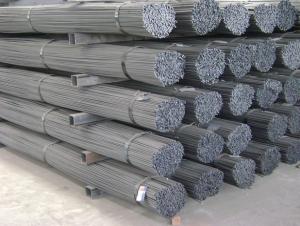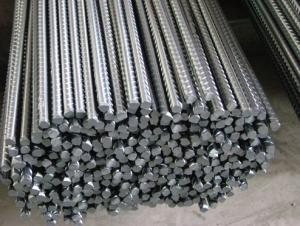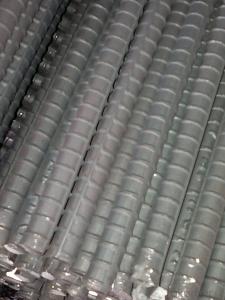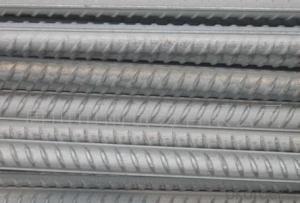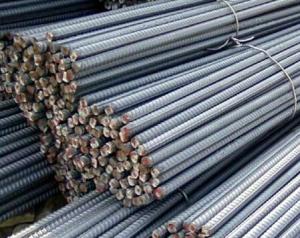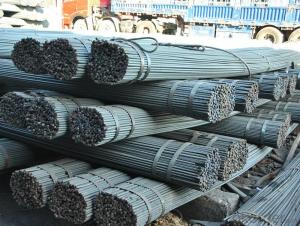Hot Rolled Steel Rebars for Concrete Reinforcing
- Loading Port:
- Tianjin
- Payment Terms:
- TT or LC
- Min Order Qty:
- 100 m.t.
- Supply Capability:
- 10000 m.t./month
OKorder Service Pledge
OKorder Financial Service
You Might Also Like
OKorder is offering Hot Rolled Steel Rebars for Concrete Reinforcing at great prices with worldwide shipping. Our supplier is a world-class manufacturer of steel, with our products utilized the world over. OKorder annually supplies products to African, South American and Asian markets. We provide quotations within 24 hours of receiving an inquiry and guarantee competitive prices.
Product Applications:
Hot Rolled Steel Rebars for Concrete Reinforcing are ideal for structural applications and are widely used in buildings, bridges, roads and other engineering construction. Big to highways, railways, bridges, culverts, tunnels, public facilities such as flood control, dam, small to housing construction, beam, column, wall and the foundation of the plate, deformed bar is an integral structure material..
Product Advantages:
OKorder's Hot Rolled Steel Rebars for Concrete Reinforcing are durable, strong, and wide variety of sizes.
Main Product Features:
· Premium quality
· Prompt delivery & seaworthy packing (30 days after receiving deposit)
· Can be recycled and reused
· Mill test certification
· Professional Service
· Competitive pricing
Product Specifications:
Standard | GB UK USA | HRB335 HRB400 HRB500 G460B, B500A, B500B,B500C GR40, GR60 | |
Diameter | 6mm,8mm,10mm,12mm,14mm,16mm,18mm,20mm, 22mm,25mm,28mm,32mm,36mm,40mm,50mm | ||
Length | 6M, 9M,12M or as required | ||
Invoicing | Actual or Theoretical Weight Basis as buyer’s request. | ||
Type | Hot rolled steel rebar | ||
Diameter(mm) | Section area (mm²) | Mass(kg/m) | Weight of 12m (kg) | Pcs/ton |
6 | 28.27 | 0.222 | 2.664 | 375.38 |
8 | 50.27 | 0.395 | 4.74 | 210.97 |
10 | 78.54 | 0.617 | 7.404 | 135.06 |
12 | 113.1 | 0.888 | 10.656 | 93.84 |
14 | 153.9 | 1.21 | 14.52 | 68.87 |
16 | 201.1 | 1.58 | 18.96 | 52.74 |
18 | 254.5 | 2.00 | 24 | 41.67 |
20 | 314.2 | 2.47 | 29.64 | 33.74 |
22 | 380.1 | 2.98 | 35.76 | 27.96 |
25 | 490.9 | 3.85 | 46.2 | 21.65 |
28 | 615.8 | 4.83 | 57.96 | 17.25 |
32 | 804.2 | 6.31 | 75.72 | 13.21 |
36 | 1018 | 7.99 | 98.88 | 10.43 |
40 | 1257 | 9.87 | 118.44 | 8.44 |
50 | 1964 | 15.42 | 185.04 | 5.40 |
FAQ:
Q1: Why buy Materials & Equipment from OKorder.com?
A1: All products offered byOKorder.com are carefully selected from China's most reliable manufacturing enterprises. Through its ISO certifications, OKorder.com adheres to the highest standards and a commitment to supply chain safety and customer satisfaction.
Q2: How many tons of steel products could be loaded in containers?
A2: Usually the steel products are delivered by bulk vessel because of the large quantity and the freight. However, there are no bulk vessel enter some seaports so that we have to deliver the cargo by containers. The 6m steel product can be loaded in 20FT container, but the quantity is changed according to the size, usually from 18tons to 25tons.
Q3: How soon can we receive the product after purchase?
A3: Within three days of placing an order, we will arrange production. The normal sizes with the normal grade can be produced within one month. The specific shipping date is dependent upon international and government factors, the delivery to international main port about 45-60days.
Images:
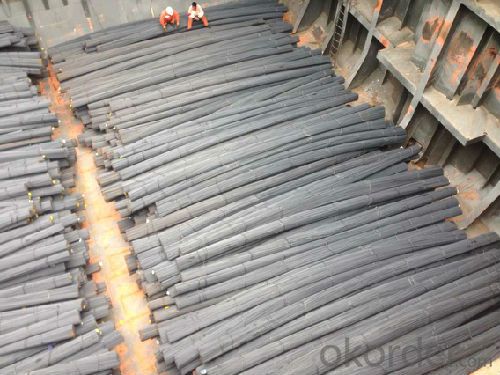
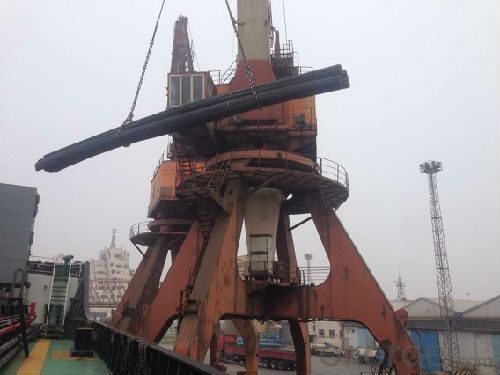
- Q: Can steel rebars be used in structures with curved or irregular shapes?
- Yes, steel rebars can be used in structures with curved or irregular shapes. Steel rebars are highly flexible and can be bent or shaped to fit the desired form of the structure. They are commonly used in reinforced concrete structures, which often require curved or irregular shapes to meet architectural or structural design requirements. The rebars are typically bent or cut to the required shape and then securely anchored in place to provide strength and reinforcement to the structure. This allows for the construction of structures with complex shapes and designs, while still ensuring structural integrity and durability.
- Q: How do steel rebars contribute to the overall sustainability of a construction project?
- Steel rebars contribute to the overall sustainability of a construction project in several ways. Firstly, they enhance the structural integrity and durability of concrete structures, reducing the need for frequent repairs or replacements, thus minimizing material waste and conserving resources. Additionally, steel rebars can be recycled at the end of their life cycle, reducing the demand for new raw materials and decreasing the carbon footprint of the project. Furthermore, their high tensile strength allows for the construction of lighter and more efficient structures, reducing the overall energy consumption during the project's lifespan. Overall, steel rebars play a crucial role in promoting the sustainability of construction projects by ensuring longevity, recyclability, and improved energy efficiency.
- Q: How are steel rebars stored and transported?
- Steel rebars, also known as reinforcing bars, are commonly used in construction projects to provide strength and stability to concrete structures. Proper storage and transportation of steel rebars is essential to maintain their quality and prevent any damage or accidents. When it comes to storage, steel rebars are typically stored in a designated area, commonly known as a rebar yard or laydown yard. This area should be clean, well-drained, and free from any debris or organic materials. Rebars are usually stacked in bundles or placed on elevated racks to prevent contact with the ground, which could cause corrosion or contamination. To ensure safety and ease of access, rebars should be organized and labeled based on their sizes and grades. This helps construction workers identify and retrieve the required rebars efficiently without causing any disruption or delays in the project. In terms of transportation, steel rebars are often loaded onto trucks or trailers for delivery to construction sites. It is crucial to secure the rebars properly during transportation to prevent any shifting or movement that could cause damage to the rebars or compromise the safety of the vehicle. Rebars can be transported in various ways, depending on their length and quantity. They can be bundled together using wires, straps, or steel bands to keep them in place. Additionally, wooden or metal supports can be used to prevent the rebars from bending or sagging during transit. During transportation, it is important to consider weight restrictions and road regulations to ensure compliance and safety. If rebars need to be transported over long distances, it is essential to coordinate with logistics companies that specialize in handling heavy and oversized cargo. In summary, steel rebars are stored in designated areas such as rebar yards, where they are stacked, labeled, and protected from corrosion and contamination. When it comes to transportation, rebars are secured using wires, straps, or steel bands and loaded onto trucks or trailers. Proper handling and adherence to regulations are crucial to ensure the safety and integrity of the rebars during storage and transportation.
- Q: How are steel rebars specified in construction drawings?
- In construction drawings, steel rebars are specified using a combination of symbols, labels, and dimensions. These specifications provide detailed information about the size, shape, and placement of the rebars within the concrete structure. The specifications for steel rebars typically include the following information: 1. Rebar Size: The diameter of the rebar is specified using a numerical value, such as 8, 10, 12, etc., which indicates the bar size in millimeters or inches. 2. Rebar Shape: The shape of the rebar can be specified using symbols or abbreviations, such as "D" for deformed or "SD" for smooth and deformed. 3. Rebar Spacing: The spacing between rebars is typically specified using a numerical value, such as 150, 200, or 300, which indicates the distance between the centerlines of adjacent rebars in millimeters or inches. 4. Rebar Bending: If rebars need to be bent to a specific shape, the bending details are often included in the construction drawings. This includes the angle and radius of the bend, as well as the location at which the bending is required. 5. Rebar Placement: Construction drawings typically include plans, sections, and elevations that show the precise location and arrangement of the rebars within the concrete structure. These drawings may include details such as the number of rebars, their orientation, and their position relative to other elements of the structure. 6. Rebar Schedule: A rebar schedule is often provided in construction drawings, which summarizes all the specifications for each rebar element in a tabular format. This includes information such as the rebar mark, size, length, weight, and any special instructions. Overall, the specifications for steel rebars in construction drawings ensure that the rebars are correctly fabricated, installed, and integrated into the concrete structure, meeting the design requirements and ensuring the structural integrity and safety of the building.
- Q: Why is the threaded steel thread?
- The raw steel billet for the production of threaded steel is carbon structural steel or low alloy structural steel which is treated by calm melting, and the finished steel bar is delivered in hot rolling forming, normalizing or hot rolling state.
- Q: What are the different types of steel rebars used in road constructions?
- Road constructions commonly utilize various types of steel rebars. These include: 1. Mild steel rebars: These are the most frequently employed rebars in road constructions. They consist of low carbon steel and possess a smooth surface. Mild steel rebars are renowned for their durability and strength, making them suitable for a range of road construction applications. 2. High-strength rebars: Crafted from high-strength steel, these rebars possess a greater yield strength compared to mild steel rebars. They are utilized in road constructions that require enhanced load-bearing capacity, such as bridges and highways. 3. Epoxy-coated rebars: These rebars are coated with epoxy resin to enhance their resistance to corrosion. They are commonly used in road constructions in areas exposed to moisture and chemicals, such as coastal regions. 4. Galvanized rebars: These rebars feature a zinc coating that provides protection against corrosion. They are particularly suitable for road constructions in regions with high humidity or a high risk of corrosion. 5. Stainless steel rebars: Constructed from stainless steel, these rebars exhibit exceptional corrosion resistance. They are frequently employed in road constructions that necessitate long-term durability and resistance to corrosion, such as tunnels and underground structures. Selecting the appropriate type of steel rebar for road constructions is crucial and should be based on specific project requirements, including load-bearing capacity, exposure to corrosion, and environmental conditions. Consulting structural engineers and adhering to local construction codes and standards is essential to ensure the successful implementation of road construction projects.
- Q: How do steel rebars improve the flexural strength of concrete?
- Steel rebars improve the flexural strength of concrete by providing tensile strength, which is typically lacking in concrete. The rebars act as reinforcement, absorbing the tension forces that occur when the concrete is subjected to bending or flexing. This combination of concrete and steel rebars creates a composite material that is stronger and more resistant to cracking or breaking under flexural loads.
- Q: Can steel rebars be used in structures exposed to extreme temperatures?
- Yes, steel rebars can be used in structures exposed to extreme temperatures. Steel has high thermal conductivity, which allows it to transfer heat quickly, minimizing the risk of structural damage due to thermal expansion or contraction. However, it is essential to consider the specific temperature range and the potential impact on the structural integrity of the rebar. In extremely high temperatures, other materials or protective measures may be necessary to ensure the stability and safety of the structure.
- Q: Can steel rebars be used in retrofitted structures?
- Yes, steel rebars can be used in retrofitted structures. Rebars are commonly used in retrofitting projects to enhance the strength and stability of existing structures. They can be placed strategically to reinforce weak areas and improve the overall structural integrity.
- Q: What is the purpose of using stirrups with steel rebars?
- The purpose of using stirrups with steel rebars is to provide lateral support and prevent the rebars from buckling or sliding when subjected to tensile or compressive forces. Stirrups help enhance the structural integrity and overall strength of reinforced concrete structures, ensuring they can withstand various loads and stresses.
Send your message to us
Hot Rolled Steel Rebars for Concrete Reinforcing
- Loading Port:
- Tianjin
- Payment Terms:
- TT or LC
- Min Order Qty:
- 100 m.t.
- Supply Capability:
- 10000 m.t./month
OKorder Service Pledge
OKorder Financial Service
Similar products
Hot products
Hot Searches
Related keywords
